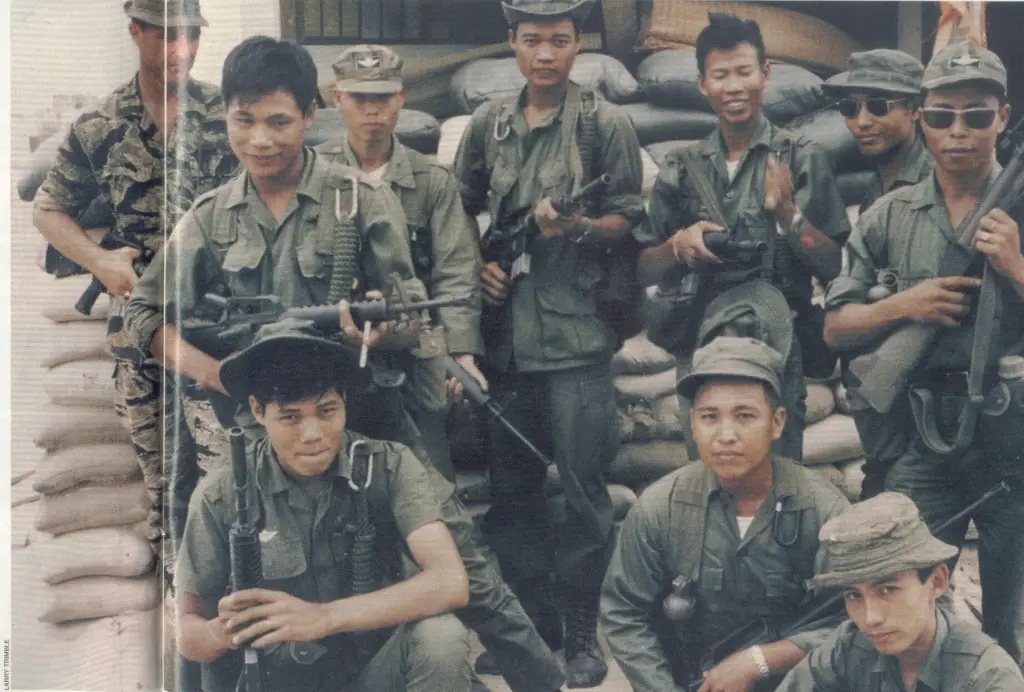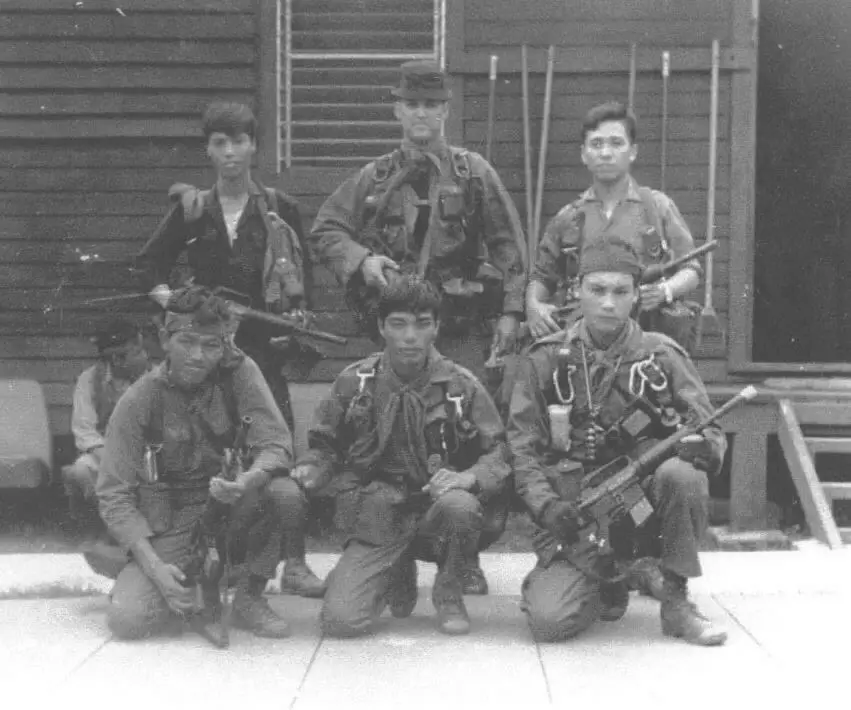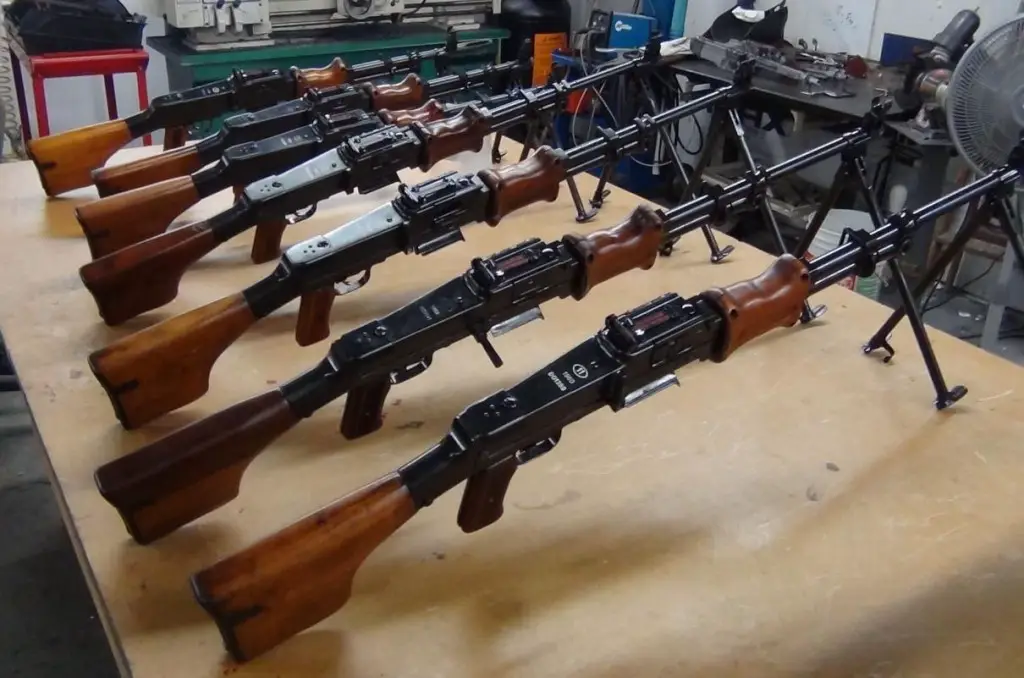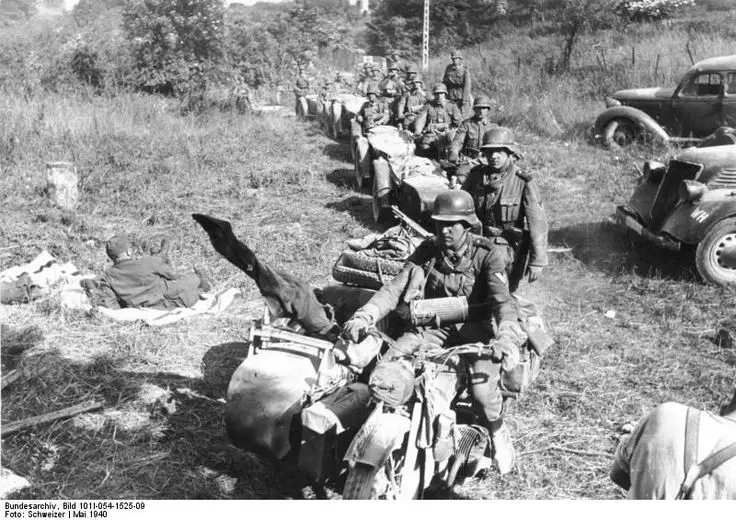You’re going to know the answer before we say it: “It depends.” Well, it does, really, but there’s room for a discussion of the factors it depends on. This post got its start in a reply to a commenter, then it just grew.
Lessons from Recon History
There’s a fundamental balancing equation here: team size versus team survival. Especially as the world gets more urbanized, it’s harder to sneak and peek without getting spotted. Until you get spotted, it’s advantageous to recon with the fewest men possible (the military will never tolerate just one… it’s against the DNA. Although SF has run a singleton, for clandestine operations, in the past, and certain JSOC elements still select people with the possibility in mind. What they do once they select them is their business, not yours or mine). But once you get spotted it’s advantageous to have as many men as possible (more eyes in more directions, more guns, all in all more firepower and staying power until you can get reinforced or extracted).

MAC-V SOG RT Asp, in garrison, 1969. Left standing Mel Westerfield; Opposite Lo Van An (Sole survivor of Asp’s last mission) Courtesy Ken Conboy and James Morrison.
It also depends on terrain and mobility. We found a short ODA (usually about 8 men) a good recon element whether on foot or in mobility equipment in the desert environment. In a wooded/urbanized environment a recon was best done by a third to a quarter of a full ODA (3-4 men). In Vietnam, LRRPs (Big Green’s Long Range Reconnaissance Patrols) ran with six guys and Marine recon with about double that. SOG, which ran deeper in the denied area and had its own dedicated reaction forces (Bright Light and Hatchet Forces) ran with from four to eight guys, of whom two to three were Americans, and the remainder indigenous troops.

RT Asp, ready to go, 6 men. Top center is CPT Garry Robb, later Recon Co. Commander. If the team ran in US uniform (as here), they could be photographed; photos of teams running in NVA uniforms and gear were verboten.
Project Delta (only related to the later SFOD-D by name) ran with four to six Americans. While Beckwith was in command, he sometimes did not attempt to extract compromised teams and just took their pin off the map and used the lift that might have extracted them to make new insertions instead, which is one reason few men from his Vietnam command volunteered for his later SOF command.
We believe that the Selous Scouts were able to run two and three man recons in part because their enemy was poorly trained, and the terrain provided decent cover and concealment, making the better-trained and fitter Scouts much more able to evade contact once made than a SOG team up against the well-oiled counter-reconnaissance machine of Group 559 along the Ho Chi Minh trail. Which is good, because the Rhodesians did not have the communications and air support the American unit had ten years earlier. “Floppy” marksmanship in particular was not up to the NVA standard, and often only the leader of a “stick” would have the arcane knowledge of how to work the RPD light machine gun.

RPDs (these are semiauto builds from Project Guns, but the original was the primary support weapon carried by the terrs of ZIPRA and ZANLA. It was most used in Vietnam after the US drawdown)
This also may be part of why Scout tactics didn’t map directly to SWA or southern Angola. Terrain’s a lot more open; SWAPO seems to have been better trained and more willing to stand and fight than ZANLA or ZIPRA. (The classic enemy break-contact tactic in Rhodesia was the “bombshell,” each man escape-and-evading to a pre-briefed rally point). But we digress.
Let’s Isolate the Sizing Factors, Then
As we see it there are certain factors. They include (in rough order of priority)
- The Terrain, in its largest, op-order-paragraph sense, to include the weather, the plants, the enemy forces, presence of noncombatants, neutrals and third parties, the whole non-friendly panoply. You can use the METT-T mnemonic to see if you’ve covered these, just dropping the letters that don’t apply.
- The enemy and his state of alertness, training, and general “Vitamin Clue”.
- Your own troops: fitness, state of training, ability to appear something other than as they are.
- Your communications and the imminence of support. What kinds of support? Only accurate fires, reaction forces, and extraction matter. Note that if your reaction force is road-bound, and the enemy has the capability of closing the roads, you actually might not have a reaction force at all.
These factors apply to your operations.
If the terrain favors concealed movement and ready contact-breaking, then the optimum team size is smaller. With each man you add, your detectability to human eyes and technical sensors increases exponentially. An eight man team is not eight times as detectable as one man, it is more detectable to the power of eight.
Adjusting Size in Ongoing Operations
In the past recon teams, whether SOG’s, the Rhodesian SAS, or Guderian’s motorcycle patrols, were sized initially by guess and by God, and then, by experience which quickly tips a commander (sometimes at the expense of his reconnaissance specialists) as to whether he has sized his teams rightly. This sizing should be kept in the recon community and not become an element of Army doctrine, as it needs to conform to changing circumstances and evolving conditions. The motorcycle recon that served the Germans so well in their run through Poland in 1939, the Low Countries in 1940 and the western USSR in 1941 would have been suicidal on the static front of Italy in 1944, or most anywhere the Red Army was present in force that year.
The fact is, armored reconnaissance, aerial reconnaissance, and the stealthiest ground sneak-and-peak reconnaissance, as different as they seem, are not different things. They are different methods of doing the same thing, simply adapted for the environment at hand.
When you can do it, the very best reconnaissance is always to put the eyes of a trusted man directly on the enemy and his operations. How you do that has to adapt to the terrain, the enemy and friendly forces, and the pace of operations.
So the size of you recon teams, like their composition?
It depends.

Kevin was a former Special Forces weapons man (MOS 18B, before the 18 series, 11B with Skill Qualification Indicator of S). His focus was on weapons: their history, effects and employment. He started WeaponsMan.com in 2011 and operated it until he passed away in 2017. His work is being preserved here at the request of his family.


27 thoughts on “How Big Should a Recon Team Be?”
If a 8 man element is more detectable to the power of eight than one man, it has the same detectablity…(1 to the 8th power = 1)…unless we are assuming (and I am) that two is one, in which case your statement makes sense as intended. Or were you trying to convene something more esoteric?
Yeah, I meant powers of 2. I said powers of 1 which is mathematically retarded. Somewhere my grade school math teachers are muttering that they knew I’d come to a bad end for want of maths.
A comment on the digression. Yep, SWAPO were different. They, even more than ZIPRA, were Soviet oriented and reflected a Red Army point of view. The incursion groups considered themselves to be soldiers in an Army, not political operatives. Their political types would operate in two to four man teams, carrying weapons more as a badge of rank than with the intention of fighting anybody, unless you count the assassination of “informers” and such like. The SWAPO fighting groups were sent south to make contact with and inflict casualties on the SADF.
The use of mortar fire is an example of the difference. In contact ZIPRA and ZANLA would use their mortars (usually 60mm) pretty conventionally, dropping their bombs on their enemies rear, then, given time, walking them in closer. We would drop ours to the left and right oblique trying to catch the Terrs as they bombshelled.
In a SWAPO unit the mortars (usually 82mm) were under the “Artillery Commander” who was attached to, but not subordinate to, the “Unit Commander”. This may seem a bit Ruritanian but it meant the mortar teams were fighting their own war and didn’t have to obey their nominal boss. So, in the interest of inflicting casualties, they simply mortared the contact, and if they took out some of their own well, too bad, they were bound to get some of us, right?
When you made contact in Rhodesia you stood fast, delivered fire, broke them and then chased them. In Southwest when you made contact you Kept Moving (!) either rolling to a flank or, if it came to it, rolling right over the bastards because, sure as hell, within a minute or so a whack of 82mm bombs were going to land where you’d just been standing. Our mortar team would be on a flank and dropping every round they had as fast as they could in a survey of the enemy rear in what amounted to counter-battery fire.
Oh yes, those thrilling days of yesteryear. Anyhow, for what it’s worth. Wafa Wafa, Wasara, Wasara.
Fascinating insights, these.
My limited time in Rhodesia 1978-79 offered me no opportunity to dewal with SWAPO’s SOPs for doing business and my job was not leg infantry, but that pretty much follows what I’ve heard. But there were numerous other differences as well, one being the quality of the troops fielded by the Rhodesians, not that they were necessarily better as individuals, but there was certainly better motivation and morale for the most part, and of course the Rhodies were fighting on their own ground. Climate and terrain was a difference as well, with the Rhodesians missing out on a monsoon/rainy season from April to September, with June and July particularly constant if not driven.
Speaking of mortars, I recall one of the SOG teams carrying a 60mm mortar with them as a followup to the immediate breaking of contact, which may account for the relatively larger number [3US, 9 indig, sometimes 4/10] of warm bodies in the team [CCC teams New York and California IIRC] in part to carry additional mortar rounds plus a couple of B-40/RPG2 AT rocket launchers.
To clarify your Marine comment, early Vietnam recon teams were large (both Force and Battalion recon). They found that the larger teams were too big to hide, and too small to fight. Later war team size settled on 6, which is approx the size of a Marsoc special recon element today. Marines felt (and feel) that any more than 6 and you can’t stay concealed. Any less and you can’t carry wounded AND fight. Which is why they were openly skeptical at the time of the SEAL 4-man team in Op Red Wings (Lone Survivor).
Thanks DB. The concealment is highly dependent on terrain and enemy density, for sure. A four-man RT in a denied area is great until you’re compromised. Then you’re buggered. Like Murphy’s guys on Red Wings. They also had bad commo. Like I said, SOG had decent coms and overwatch by special liaison planes (callsign Covey) that had a SOG guy as backseater (the Covey rider, usually a very experienced one-zero or RT leader).
Hognose, Red Wings comm problems were SEAL-inflicted. The operations officer of 2nd Bn, 3rd Marines, who had been running missions in those mountains, personally informed Lt. Cmdr Kristensen (who died in the helo crash) that only a 20-watt PRC-117 had enough power to punch a signal over those ridges, and that for whatever reason satellite phones were not reliable in those mountains. Whether this got passed down to the team only Marcus Luttrell knows. But the SEALs were carrying a 5-watt MBITR with a sat fill and a satellite phone as backup. PERHAPS because they wanted lighter comm with only 4 men.
DB, Red Wings is one of the biggest fuck ups in NSW history, if not the worst. At least the guys who went into that Panama Airfield new it was a bad idea. A lot of things went wrong from the beginning, disregarding Damnecks advice, having a shitty OIC, horrible comms plans, not taking heavy weapons, not having a plan for a soft compromise even though they were told that is the number one thing that had been happening to recon teams in the area. Its pretty much 4 guys going a suicide mission of there making, and getting a QRF team killed in the process.
Sean and guys,
Bad judgment can make for great books or movies. Anyone remember the compromised SAS team in Desert Storm that led to the book (by “Andy McNab”) and movie Bravo Two Zero? It all began with skipping and finger-drilling commo checks.
When the public hears a great, stirring story of SOF valor you are usually hearing the product of a series of screw-ups, where we didn’t use our superior judgment to avoid having to make a vulgar display of our superior skills.
One of those odd moments of convergence, a Boy Scout patrol (the standard organization that a boy will participate in; subordinate to a Troop) is to be no less than four but no bigger than eight.
Four is lower limit because, if a patrol member becomes incapacitated, his buddy can stay with him, while the other buddy pair goes for help.
Eight is the upper limit because more than that and you start running into logistical issues trying to hoof that much patrol gear.
A good friend of mine, like my best friend in the whole wide world, runs the sniper section in our sister BN.
They liked four for reconnaissance work; eight if there was a serious chance of getting into an engagement.
Strangely enough one of the “Recon Men” (MACV-SOG) I have been privileged to know broke up an enemy attack on his R/T with an RPD.
Would that have been Toby T. by any chance? He was on RT California and a big exponent of RPD and RPG-2 as the big sand in an RT’s pockets. Good mofo!
0-1 Walker on RT California also often took a 60mm mortar along on their missions according to a few books I have read on SOG
I have seen and have a few picture sin pic folders of SOG recon teams all posing and dressed in PAVN uniforms with pith helmets and AKs, RT West Virginia I believe. I will try to dig it up and post it if I can remember to later
Nope. None other than Eldon Bargewell. There’s a good account of the action (by none other than SGM Billy Waugh) on the video they made when they gave Gen Bargewell the Bull Simons Award in 2010;
https://www.youtube.com/watch?v=ciBh6vXnRGw
Our scout sniper platoon in Ramadi kept having trouble with getting into a hide unobserved; if you weren’t setting up in an abandoned area, there was a good chance that Habib was going to call the local AQ in Iraq
*Edit- that posted unexpectedly. Continued:
commander if he saw you go into Mustafa’s house next door. At first, the teams could get away with this without drawing contact, but they were being observed. Once Hadji figured out that that there were only 4 Marines in there, he would drop a 155 round + detonator in a sack at the most likely egress, and attack the hide with 15-20 guys and several RPG gunners, quickly gaining fire superiority. 4 men just isn’t enough in that situation, and even if you get out, it’s the end of the mission.
Not a sniper, but I’ve done the QRF side of that situation a couple of times.
All of my 1st Recon patrols were 6-7 men. This was during 1st Recon’s last days in Nam – ’70 -’71. I’ve read all of the reports for my time there and it is my impression that the bulk of the patrols were in this range. Force would sometimes run smaller at four. I am not one to be called good at analyzing what was best, but frankly I preferred a 6 man team. We just seemed to move better and quieter. Attached is the team with which I originally served. Damn, we were good looking.
I did recons in Afghanistan and Iraq with as many as 12 and as few as 4. With 8-12, what it usually turned into was 2-4 guys moving forward to put in the OP while the rest of the team was in direct fire range, in an overwatch position.
I served in the post Vietnam Australian Army, and we saw ourselves as jungle fighters and pretty much nothing else. The vast majority of our training involved sneaking very, very slowly and quietly through thick scrub, with formations and drills that assumed contact would occur at ranges of 10 to 30m.
Our SOP for a recce patrol in that environment was 3-4 men. I only recall one recce patrol in ten years that went out with 8 men.
With most of the Army’s operational experience coming from Afghanistan I suspect that things are a lot different now.
LRS(Long Range Surveillance) units(company and detachments) used the lineage of the LRRP units in Vietnam. We ran 6 man teams. You could adjust as necessary(METT-C), but anything smaller than 5 you ran into problems carrying all the commo gear that you needed. More than 6, to me, caused problems as far as being able to sneak around and remain hidden.
All of it is a calculated risk.
As Hognose said, the best is having actual human eyes on whatever your target is. You can have all of the gee whiz, high tech gizmos in the world but it doesn’t replace what can be seen by human eyes.
That Beckwith bit, I know that can happen but damn that’s cold.
Four, One man leads three.
The idea is to sneak in, recon and get out.
Combat is to be avoided at all costs.
If located and pinned down a radio call for Air/Arty and the battle cry “EXTRACT!” relayed to Higher command.
Eight is too large, six is about the size of a Combat capable Recon patrol.
Ideal would be two teams of four, for over watch and support.
Then that would be eight which is too large.
So…six is the ideal number for a recon patrol.
@obsidian
Funny how everyone else here (many of whom have some serious creds) is saying “it depends” and you’re coming up with a totally arbitrary number. I bet the light SOG teams running 6-8 guys wished they ran heavy with 12 (like Joe Walker’s RT California did) when they got decisively engaged.
Gentlemen, I’m not familiar with this forum but after receiving a link from an SF colleague, I read it with great interest. Allow me to observe what I think is a fundamental factor in determining appropriate size of a recon team that is referred to rather obliquely: available lift capacity. It is especially relevant if the operation in question is classified because the more clandestine the mission, the smaller the pool of dedicated support resources. In 1968/69 I served CCS/Macv/SOG. We frequently had to use McGuire rigs then Stabo rigs or rope ladders to extract teams under fire. Because of the technically illegal nature of the missions into “neutral” Cambodia each of the two launch sites was supported by only one dedicated aviation unit: the Air Force 20th SOS for (Omega Launch) northern ops, the 195th AHC and later, the 155th AHC for southern ops (Sigma Launch). “Normal” missions utilized two slicks and two to four gunships. When either a slick or gun was hit or had a mechanical problem, extractions became exponentially more challenging. No back-up lift, no artillery, no friendly forces, no tac-air and, after night fall, no commo — as in NONE — until Covey came back at first light. Regarding the post correctly identifying the existence of “reaction companies”, it is self-evident that given the limited amount of “authorized” lift available for insertions/extractions of recon teams, the loss of even one ship eliminated even theoretical possibility of bringing reaction forces to the fight. Most relevant is the fact that the loss of a single slick during a hot exfil while other teams were deployed in the AO forced life and death decisions about more losses of lift and the resultant inability to extract the other teams. As noted above we normally ran six-man teams, two Americans and four Montagnards, Nungs or Vietnamese. Sometimes three Americans went in but unless it was a very rare two-ship insert that was all the guys and guns who would fit in the early model Huey cabin. Regarding the difference between overt and covert operations, the North Vietnamese were astounded at the resources Americans committed to rescuing downed air crew in North and South Vietnam and with good reason. On the Cambodian side of the fence that was simply not the case until 1969 following the first two bomb damage assessment missions, both of which resulted in the death of many fine warriors missing to this day. So, in my aged opinion, all of the comments posted are relevant but available assets (air/sea/land) are also critical at a go/no-go level.
Really good point. Didn’t SOG also have the RVNAF 219 Sqn. “Kingbees.” I think the H-34 was gross weight and HOGE (hover out of ground effect) limited more than the turbine Huey. My impression is that the cabin of the H-34 is larger than an A/B/C model Huey and smaller than the D/H model, but I’ve never measured one.
Sir, I believe you are correct about VNAF Kingbees but they supported CCN (Command and Control/North) which ran Laotian targets which media, public and politicians knew was going on. CCS (Command and Control/South) which ran exclusively Cambodian targets and later on CCC (Command and Control/Central) — which I believe went into both countries — were supported by American aviation assets. My understanding is that the Kingbees had more lift capacity and that their piston engines could absorb more punishment that Huey turbine power plants. It should be noted that the courage and skill of the helicopter crews supporting SOG was mythical in all respects, be they American or Vietnamese.